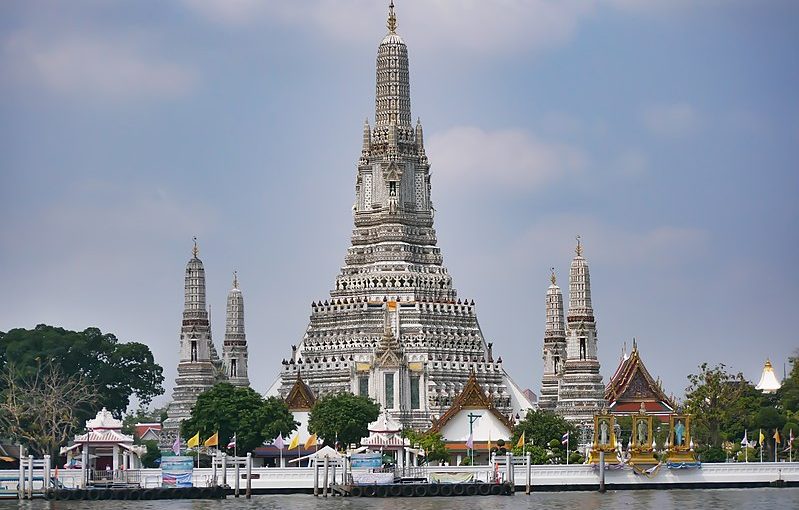Known by many as the Temple of Dawn, Wat Arun is one of Bangkok’s most iconic landmarks. Perched on the Chao Phraya River banks, its intricate porcelain design and historical significance are unlike any other in the city, making it a must-visit for travellers.
History
Although the origins of Wat Arun date back to the Ayutthaya period, the Hindu temple was later renovated by King Rama II and King Rama III in the early 19th century. Named after Aruna, the Hindu god of dawn, the temple is a symbol of the beauty of dawn’s first light, which is caught on the towering prangs as the sun rises. Unlike to gold spires characteristic of most temples in Bangkok, Wat Arun is adorned with colourful porcelain and seashells, a clear reflection of the skill and devotion of Thai artisans.
Getting to Wat Arun
Wat Arun is accessible via a short ferry ride from Tha Tien Pier, which connects to Bangkok’s Grand Palace area. Public boats, tuk-tuks, and private taxis also provide convenient options to reach the temple. For those staying at a hotel like NH Bangkok Sukhumvit Boulevard, hop on a dinner cruise after exploring the best things to do in Sukhumvit, and glide past the temple as it becomes illuminated in golden lights after dark.

Opening Hours, Entrance Fees, and Dress Code
The temple is open daily from 8:00 AM to 6:00 PM. Entrance fees are 100 THB for foreigners, although be sure to check the Thailand Tourism website for any updates. Visitors should dress modestly, covering shoulders and knees, to respect the sacred space.
Things to See
Explore the central prang for stunning panoramic views of Bangkok. The spire’s intricate murals, sculptures, and surrounding smaller prangs, each represent the wind, moon, and rain. Don’t miss the Buddha image hall, a symbol of the fascinating multicultural heritage of Thailand.
